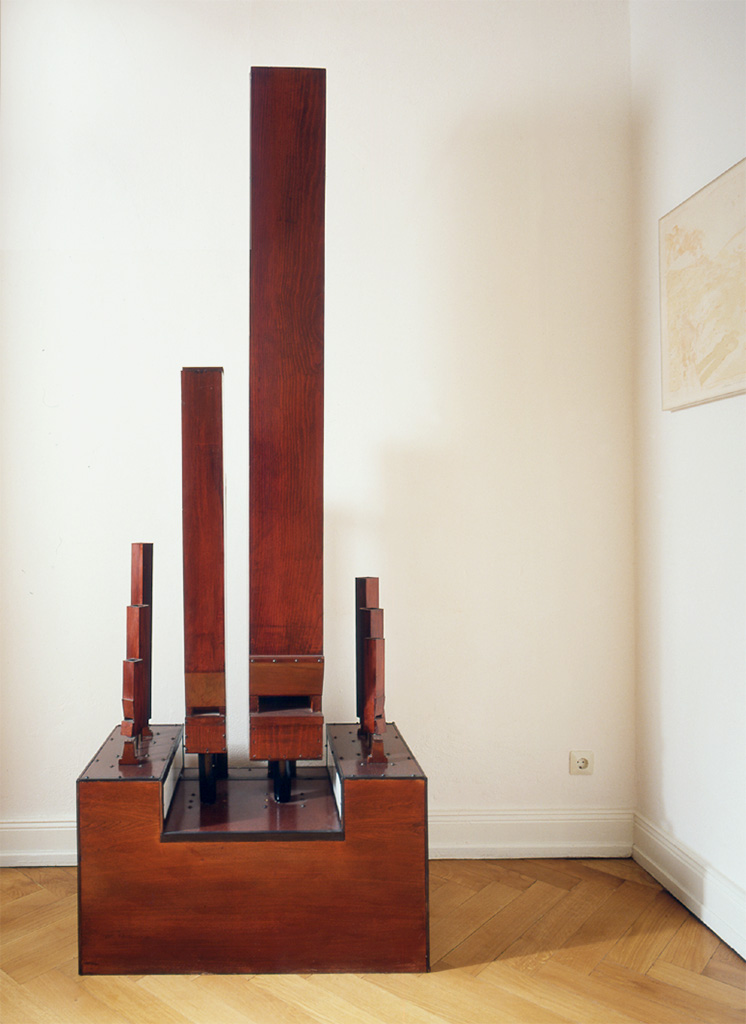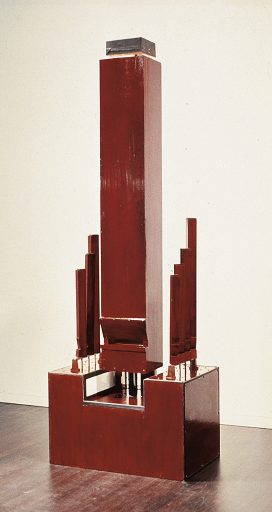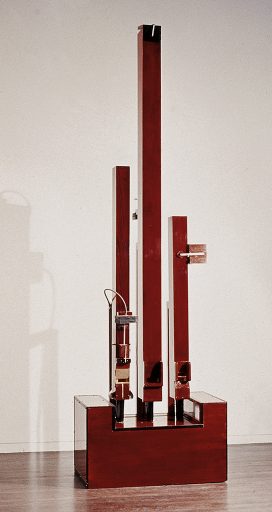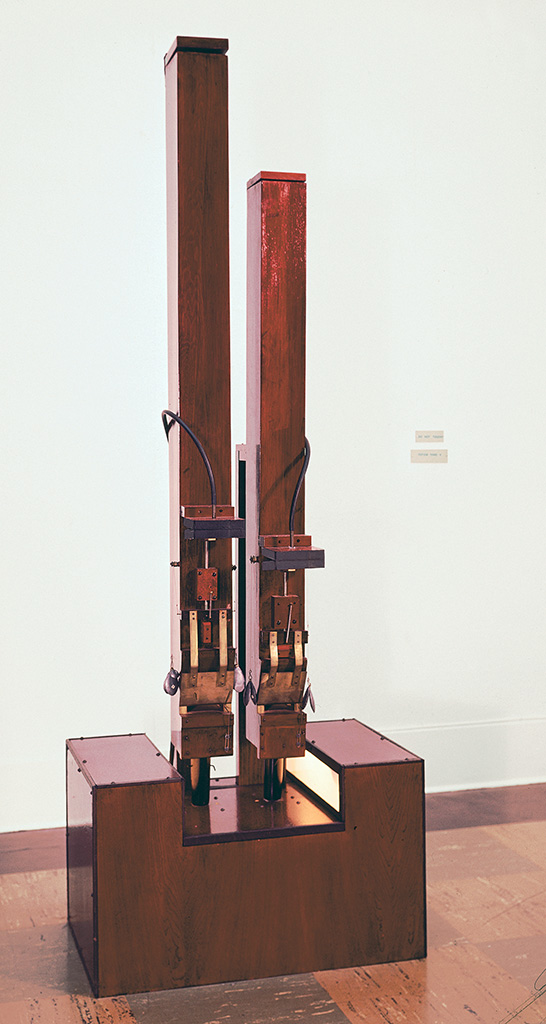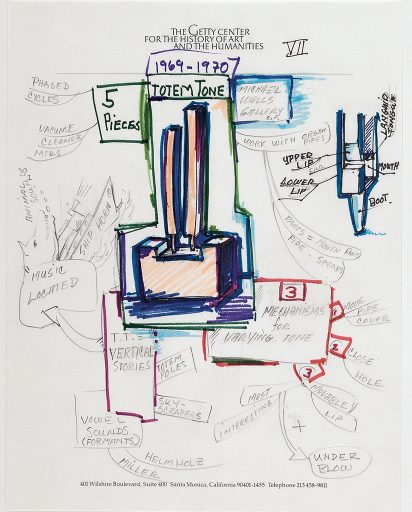photos: Estate Stephan von Huene, ZKM, Karlsruhe
Totem Tones
Even very early, Stephan von Huene was interested in the culture of the Northwest Coast Natives and their carved totem poles, which are used in the context of traditional ceremonies. Masks and the heads and bodies of animals are sculpted from wood and piled up one on top of the next. Von Huene’s organ pipe sculptures share an affinity with these totems poles, which strive into the heights, but in his works, and through the tones, these mute, powerfully expressive totems enter into a sonorous partnership that is authenticated through alliteration; this is related to von Huene’s concept of sculpture as a gesamtkunstwerk.
The tone modification is controlled by the length of the pipe. Dimensions and proportions correspond to the pitch levels. The small pipes consist of a multidirectional series of tones, which can be played in any desired succession.

S 1969–1.5
Totem Tone V
236 x 92 x 50 cm
Hirshhorn Museum, Washington D. C.
(formerly collection Sam Francis, Santa Monica, California)
The tone is modified by a movable upper lip, a flap over the upper pipe and a hole in the side of the smaller pipe. The work plays either once for 3 minutes or continuously.
Tones and pitches are altered by movable lips on both pipes. These upper lips move independently of one another, but always produce interrelated acoustic and tonal effects. This is explained by the basically equal tuning of the pipes, and the fact that the upper lips play only tones that come from the structure of the pipes.
Totem Tone IV, Hamburg 2000
Kamera: Dan Mihaltianu
1:30 min
Baden Baden 1983
Gottfried Sello (© HR 83)
2:34 min
“With Totem Tones, the external appearance is a function not just of the architecture of the housing, but of the instrumental architecture as well, of the organ pipes themselves. The title Totem Tones also alludes to Helmholtz, the author of “On the Sensation of Tones”, and finally to Dayton Miller, who produced synthetic vowels using organ pipes.
I have built five Totem Tones. Each consists of three organ pipes, which produce tones through the air stream of vacuum cleaner motors. Each pipe changes its tone in a different way: first, through a movable upper lip that opens and closes the mouth of the pipe; secondly, by closing the end of the pipe with a lid; and thirdly, through a hole in the side of the pipe that is opened and closed with a vent.
Each pipe alters its tone together with its partners, by competing for a no longer entirely sufficient portion of air. Other tone alterations result simply from the combination or non-combination of tones that sound simultaneously or concurrently. The entire work is programmed by two opaque strips and photocells. Sound and environment are as dependent upon one another as music and performance, therefore I did not want to make them even more dependent on one another.”
(S. v. H. in: Für Augen und Ohren. Von der Spieluhr zum akustischen Environment, exhibition catalog, Berlin 1980, p. 143.)

